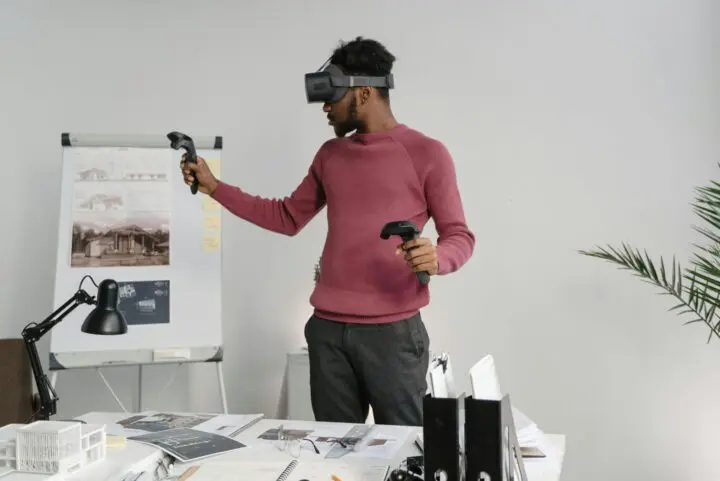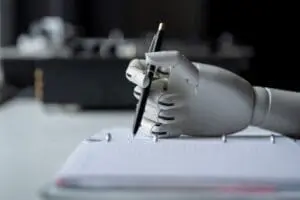AI in Architecture: Historical insights & questions answered
In 2005, my grandmother passed away at the age of 99.
Text
In 2005, my grandmother passed away at the age of 99. Looking at how artificial intelligence (AI) impacts society, I cannot help but reflect on the significant changes I have seen in a lifetime compared to what my grandmother must have lived through.
In 1903, three years before my grandmother, was born, the Wright brothers performed the first sustained flight of a powered, heavier-than-air aircraft. Just think of the other things she experienced: World War I and II, the great depression, Hiroshima, the Vietnam conflict, and the death of President Kennedy and Dr. Martin Luther King. Quietly, the first integrated circuits were developed around 1958—one of the most impactful inventions of all time. One experience we shared was the Apollo 11 landing of humans on the moon in 1969.
When I was a young aspiring architect in the 80s, I discovered the wonders of computing, which led me to explore CAD as a personal interest and as a participant in the production workflow of the architectural office. In one of my first CAD assignments, my supervisor said: “I have good and bad news. You are on the CAD team but must work the night shift.” It seemed the refrigerator-sized computers needed to run 24 hours daily to justify their costs. Notably, the change from manual drafting to CAD was a gigantic shift in project documentation and design technology. Looking back, I feel fortunate to have engaged in the new way of doing things early, as CAD became a positive catalyst for my career over the years.
In 1990, I took my first teaching position at Lawrence Technological University College of Architecture and Design with the course Computers in Architecture. We used the Prime Medusa system then, another fridge-size behemoth with hard drives the size of washing machines. A system better suited for engineering, perhaps. However, the students were engaged, and I enjoyed working with them. We all discovered new drawing modes like 3D visualization—a feature I had only dreamed of prior.
Fast forward to now, we are headed for another moment in history when an unexpected invention, AI, is set to disrupt. A moment I thought I would never see. Except this time, it could affect anything, everything, everywhere. Inevitably, there will be guardrails just as there are for product safety or pharmaceuticals. In the meantime, this is an excellent opportunity to explore the possibilities and embrace new ways of thinking.
With the development of airplanes, to sending probes to study the moons of Saturn, what my grandmother witnessed is as wide as it is deep. Like her life experience, I hope to share in this time of AI in Architecture, probing the possibilities and helping others meet their goals and dreams. Hopefully, we will recognize the parallels to history and ultimately consider that massive change is upon us.

In May 2023, AIA Arizona hosted a webinar with Damon Leverett on Artificial Intelligence (AI) in Architecture and Design. The purpose of the event was to provide fundamental information to curious architects about the concepts related to Artificial Intelligence, image-to-text generators, text prompt development, and ethical considerations. Below, we’re sharing some Q&A that resulted from this that we hope you enjoy considering keeping in mind AI and potential risk:
Q: What are the limits of AI in architecture? “None” is not the answer.
AI has several levels, each with its estimated parameters.
Q: What about Narrow AI?
We are in this state today, where systems can perform tasks in specific domains like chatbots, driverless cars, complex medical devices, and text-to-image generators. For now, Narrow AI cannot address all aspects of inquiry posed by people in a single system.
Q: What is Singularity?
The state where AI is equal to human intelligence. Many speculate that this will happen midway through the 21st century. Reported fears we experience in the media refer to this point in the development of AI. The worry is that we will lose control of AI and that it will see humanity as a threat and try to destroy us. Others, like scientist Michio Kaku, suggest merging with machines to survive.1. I think it is essential not to be distracted by the history of science fiction that portrays an AI apocalypse and ground ourselves in a more rational analysis.
Q: Explain more on Artificial General Intelligence (AGI)?
The moment when AI exceeds human intelligence and possesses the appearance of consciousness. Some scientists feel this will never happen. In Branislav Holländer’s article “Why We May Never Develop AGI,”2, he lists several reasons AGI may not be achievable.
Keep in mind that consciousness does not have a uniform definition. It is possible that the average person would not be able to recognize an AI system that possesses consciousness—or that AI does not possess consciousness, but we believe it does.3
Q: What about Super Artificial Intelligence?
In his book Architecture in the Age of Artificial Intelligence, Neil Leach describes this as a machine that “would effectively be the last invention that humankind will ever make”4. This means that AI could clone itself, improve its core programming, create inventions, and resolve the big questions of the cosmos and beyond. It is pure speculation when or if this will ever happen.
Q:When you generate images using AI, who owns the photos—you or the AI software company?
This is usually explained in the fine print in most AI text-to-image generators. Many systems grant a license with conditions. I would strongly recommend reading the terms of use clauses in each system you use. Of interest is that the United States Copyright Office issued a ruling in February 2023 5, essentially stating that works created by users using AI cannot be copyrighted. With recent congressional interest and the solicitation of public comment by the US Copyright Office, we can expect that new laws and regulations are on the horizon.
Q: Will metadata support the distinction between actual historical buildings and AI-generated ones?
This is a hot topic, especially among artists. In Adobe’s latest announcement about its AI product Photoshop Firefly, Adobe discusses a trust feature called Content Credentials1, which will insert metadata to help the public understand which images are created by humans and which by AI. We could expect this schema to grow over time, but it is unclear if all text-to-image developers are on board with this idea. In my work, I usually add the text “+AI” behind my name to be transparent about how I produced the work. Self-regulation may be the best approach in the near term.
Q: Can you input an image of a floor plan to help control the image output?
Remember that most image-to-text generators operate within the raster realm, not the vector realm we are accustomed to in CAD or BIM. It is unclear how accurate a new floor plan can be in the diffusion process.
In my work, I have followed several users in the text-to-image world struggling to make a floor plan, and many companies are working on this problem. However, I have yet to see an adequate result. Most attempts using what is available now deliver ridiculous layouts that are not helpful to architects. This isn’t to say it cannot be done. Either the technology will need to mature, or someone will make an advancement to quickly accelerate this concept. Stay tuned.
About the author: Damon Leverett, AIA, is a registered architect, artist, and educator based in the southwest region of the United States with over thirty-five years of experience working as a design leader, architect, and principal in the architecture and design profession. He is currently the 2023 President of AIA Arizona, and a Senior Adjunct Lecturer at the School of Architecture and the College of Information at the University of Arizona, where he teaches architecture design, building technologies, installation design, and computing in the arts. He also holds a Master of Fine Arts in Web Design and New Media from the Academy of Art University in San Francisco.
Damon is currently the 2023 President of AIA Arizona and a past Director at the National Architectural Accrediting Board. He has over thirty-five years of experience working as a design leader, architect, and principal in the architecture and design profession.
The image in this article is authored by Damon Leverett using MidJourney.
- https://singularityhub.com/2010/12/15/michio-kaku-if-you-cant-beat-the-singularity-join-it-video/
- Leach, Neil. Architecture in the Age of Artificial Intelligence: An Introduction to AI for Architects. Bloomsbury Visual Arts, 2022.
More on Artificial Intelligence

AI on AI: Risks Created by Emergence of AI for Design Professionals
News ▪ April 2025
Ethical challenges of generative AI in architectural practice
News ▪ February 2025
As AI use grows, architects should consider risks, rewards, and related liabilities
News ▪ April 2024